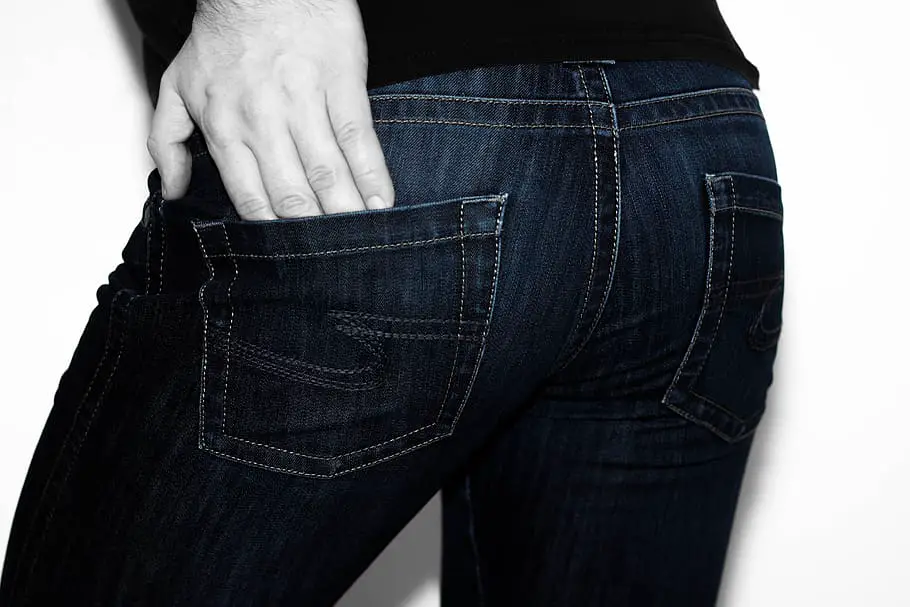Article reviewed and approved by Dr. Ibtissama Boukas, physician specializing in family medicine
And if your buttock pain that radiated into the leg came from the piriformis muscle? Piriformis syndrome, often confused with sciatica, could be the source of your problem.
What is piriformis syndrome, and how do you recognize it? How long does it last? What are the ways to treat it?
This easy-to-read article tells you the difference between piriformis syndrome and other conditions that cause leg pain, and offers treatment strategies to help you get better.
Definition and anatomy
Before talking about piriformis syndrome, it is worth discussing the anatomy of the piriformis muscle, this small muscle located in the deep part of the buttock, and its relationship with the sciatic nerve.
The piriformis originates from the sacrum and attaches to the greater trochanter of the femur. It allows rotation of the hip and contributes to the stability of this joint in a standing position.
The sciatic nerve, on the other hand, originates from vertebrae L4 to S3 of the spine, where the nerve roots of these vertebrae join to form the sciatic nerve.
One of its peculiarities is that the sciatic nerve passes directly under the fibers of the piriformis muscle. In some people, however, the nerve passes directly through the fibers of this muscle.
In some situations, the muscle may be compressed, spasmed, injured, tight, or swollen. In short, any injury to the piriformis muscle can lead to piriformis syndrome, and cause symptoms directly to the muscle or surrounding structures (such as the sciatic nerve).
Symptoms of the disease
Here are the typical symptoms associated with piriformis syndrome:
- Pain and stiffness in the buttock
- Irradiations to the back of the thigh, calf and foot (like a sciatica)
- Numbness, tingling or burning sensation in the lower limb
- Worse pain when climbing stairs or climbing a slope
- Pain worse after prolonged sitting (especially when crossing the legs)
- Decreased hip range of motion
- Relief of symptoms while lying down
Diagnosis of piriformis syndrome
There is no single test that can diagnose piriformis syndrome. Moreover, it is common to see nothingmedical imaging despite the presence of pain.
If a test of x-ray, scanner or MRI, it is more to eliminate disc or nerve damage than to identify a piriformis syndrome.
Moreover, since the symptoms are similar to sciatica, the herniated disc or sacroiliac dysfunction, it is not uncommon to overlook this diagnosis.
It should be mentioned that this diagnosis is not unanimous among doctors and the scientific community.
The following are clinical features that may indicate damage to the piriformis muscle:
- Painful hip movement
- Pain reproduced on palpation of the piriformis muscle
- Pain when stretching the piriformis muscle
- Pain on contraction of the piriformis muscle
- In extreme cases, an infiltration at trigger point can be given to the piriformis muscle to see if the symptoms improve.
How long does piriformis syndrome last?
On average, the duration of piriformis syndrome is usually three to six weeks in the presence of medical treatment associated with appropriate physical therapy.
However, studies have shown that its duration can be extended by several months or even several years in certain cases.
Indeed, several factors come into play to assess its duration. In addition to the response to prescribed treatments and the severity of the lesions, certain factors are recognized to have an influence on the healing time in case of lower back pain.
Therefore, before talking about the healing time, we ask our patients to consider the following factors :
pain intensity
First, it must be remembered that the intensity of the pain is not necessarily correlated with the severity of the compression of the sciatic nerve. Indeed in pathology, some lesions do not cause pain and there may be pain without lesion.
Moreover, even if the symptoms are intolerable, healing can be accelerated with adequate treatment. Therefore, the intensity of the pain will be used as a criterion only to prescribe the most appropriate treatment.
Duration of symptoms
On the other hand, the duration of the symptoms generally influences the prognosis. It is generally considered that if pain has been present for a long time, it has probably "crystallized" in your brain.
In other words, it will take longer to disappear because our nervous system has become accustomed to its presence.
Localization and irradiation of pain
The severity of the attack is intimately linked to the localization of the pain present. Indeed, pain typically localized at the level of the buttock is usually mild and will take a short time to heal.
On the other hand, a pain radiating down the lower limb tends to persist longer and therefore indicates an advanced degree of the attack. And in particular, if the irradiations do not respond to any therapy aimed at centralizing the symptoms, it is estimated in this case that the healing time will be longer.
Psychosocial factors
It should be noted that ill de of are multifactorial. This means that several factors can affect pain and healing.
Surprisingly, it has been discovered that certain psycho-social states can aggravate the disease and increase the risk of progression to chronicity. We quote:
- emotional difficulties such as depression, anxiety, stress.
- Inappropriate behavior or expressions regarding back pain, such as the belief that pain would be dangerous or could lead to disability.
- Inappropriate attitudes towards pain, in particular avoidance or reduction of activity, linked to fear.
- Work-related issues (e.g. job dissatisfaction or perceived hostile work environment) or pay issues (retirement, disability pension)
Physical activity levels
Note that physical inactivity is an important factor in the occurrence lumbar disorders including piriformis syndrome. Indeed, regular physical activity helps maintain good physical shape as well as rapid recovery in the event of muscle damage and avoid any recurrence.
In sum:
- Let us remember that the duration of a piriformis syndrome is specific to each individual, with regard to several factors that can influence their condition.
- Keep in mind that if the condition is left untreated, it may persist and worsen. It is therefore recommended to consult as soon as possible in order to have an early diagnosis and therefore an appropriate treatment.
- According to several studies, on average 80% of patients experience a regression of symptoms by applying conservative methods: rest, ice, taking anti-inflammatories and muscle relaxants.
- In case of chronic damage, manual therapies (osteopathy, physiotherapy, physiotherapy…) can be of great help in getting a cure.
Piriformis Syndrome Rehabilitation
Rehabilitation of piriformis syndrome is based on a progressive approach aimed at controlling pain and inflammation, then toning and softening the piriformis muscle.
Here are some treatment modalities used in the treatment of this syndrome:
Medication
Personalized medications as anti-inflammatories and painkillers can act on pain. In addition, muscle relaxants can reduce tension and spasms in the piriformis muscle.
Heat/Ice
Ice is generally used to calm inflammation and pain. Heat, on the other hand, relaxes tense muscles.
To learn more about using ice vs heat, read the following article.
Massage and passive treatments
A qualified therapist can use various massage techniques to relax the piriformis muscle (myofascial release, trigger point, etc.).
In addition to massage, passive stretching of the piriformis and surrounding muscles can provide significant relief. Hip mobilizations can also help.
Alternative treatments
Although there is little scientific evidence supporting this kind of modality, alternative techniques are often used to treat piriformis syndrome..
Alternative treatments include:
- acupuncture
- acupressure mat
- suction cup (cupping therapy)
- myotherapy
- Quinton plasma
- percutaneous hydrotomy
- therapeutic yoga
- craniosacral therapy
What about natural remedies?
Although they are not supported by solid scientific evidence, several natural products and home remedies are used as an alternative to medication to treat buttock pain associated with piriformis syndrome, in particular for their anti-inflammatory properties. It is essential to consult a doctor beforehand, mainly to avoid drug interactions and side effects.
Here is a non-exhaustive list of plants and essential oils that are effective in controlling pain and inflammation. The products are available on the site Country. Use promo code LOMBAFIT15 if you wish to obtain one of the following products, or any remedy aimed at relieving your symptoms and improving your quality of life:
- Turmeric. Thanks to its antioxidant and anti-inflammatory powers very powerful, turmeric is one of the most used plants in a culinary and therapeutic context. The composition of turmeric is essentially made of essential oils, vitamins (B1, B2, B6, C, E, K) and trace elements. But it is to its composition rich in curcumin and curcuminoids that we owe them and calm skin of this spice.
- Ginger. In addition to the special flavor it brings to the kitchen and its aphrodisiac properties, ginger is a root well known for its anti-inflammatory powers. the gingerol gives it its anti-inflammatory action. It is an active component acting on the inflammatory pain related to chronic joint inflammatory diseases, including rheumatoid arthritis, lupus, rheumatic diseases, etc. It has been proven that this active element is also effective in acting on the inflammation linked to arthritis and sciatica. Ginger also has other benefits thanks to its high potassium content and its richness in trace elements (calcium, magnesium, phosphorus, sodium) and vitamins (provitamin and vitamin B9).
- Omega-3s. Omega-3s are polyunsaturated fatty acids that play a very important role in the functioning of our body. They are provided by food in three natural forms: docosahexaenoic acid (DHA), alpha linolenic acid (ALA) and eicosapentaenoic acid (EPA). Beyond their action on the brain and the cardiovascular system, omega-3s prove very effective against inflammation. Indeed, they have the ability to act on the inflammatory mechanisms in osteoarthritis by slowing down cartilage destruction, thus they reduce the intensity of osteoarthritis pain. Since sciatica is most often linked to inflammation secondary to a herniated disc, it can also respond to omega-3s if you consume them regularly.
- Lemon eucalyptus. Eucalyptus is a plant most often used in the form of herbal tea or essential oil. She would have anti-inflammatory effects which give it the ability to act on the bone and joint pain in general and the pain of sciatica in particular.
- wintergreen. Wintergreen is a shrub from which a very interesting essential oil is extracted. It is one of the most used essential oils in aromatherapy. This oil extracted from the shrub bearing the same name, is used in massage to relieve sciatica and act like a analgesic. Indeed, it provides a heating effect thanks to its ability toactivate blood circulation locally.
Remember that these products do not replace medical treatment. Do not hesitate to consult for support adapted to your condition.
Exercices
Once the pain is under control, it is important to maintain the piriformis muscle to avoid the risk of recurrence. Of the activities dStrengthening and stretching such as these allow you to resume daily activities:
One-sided bridge
- Lie on your back
- Extend the non-painful leg so that the knee is straight and maintain full extension.
- Raise the buttocks off the ground by pushing off with the heels of the affected leg.
- Slowly lower back to the starting position.
- Do these movements for about twenty repetitions. Take breaks as needed.
Piriformis stretch
- Lie on your back.
- Cross the symptomatic leg so that the heel rests on the opposite leg.
- Pull the non-symptomatic leg towards you. At this point, you should feel a stretching sensation behind the symptomatic buttock.
- Hold the stretch for 30 seconds, then repeat 3 times, taking breaks between each set
Infiltration
In some extreme cases, the doctor will try to resort to infiltration to relieve the symptoms. This is usually the last resort before the surgery.
There are several possible types of infiltration. Although the main one is cortisone infiltration at the injured site, it is possible to use botox injections for the relaxation effect caused.
Conclusion
Piriformis syndrome is a condition that affects the piriformis muscle. Symptoms felt in the buttock and leg often stem from secondary irritation of the sciatic nerve anatomically connected to the piriformis muscle.
The diagnosis is not easy to make, mainly because sciatica of disc origin, or even damage to the sacroiliac joint, can cause similar symptoms.
The treatment aims to calm inflammation, reduce muscle tension and indirectly nervous pressure, tone and relax the piriformis muscle.
A health professional is best able to treat this syndrome, and reduce the healing time.
Good recovery !




